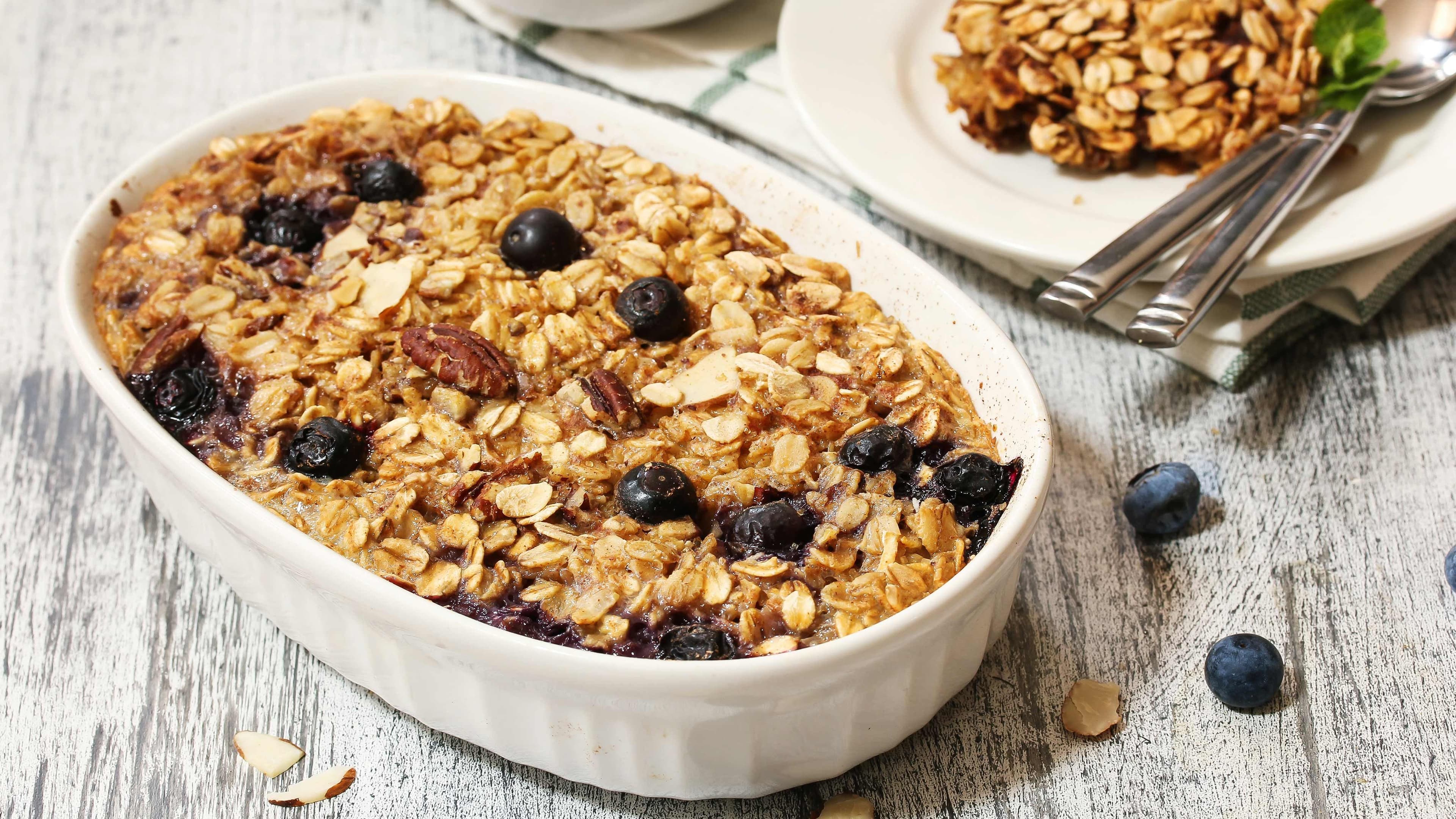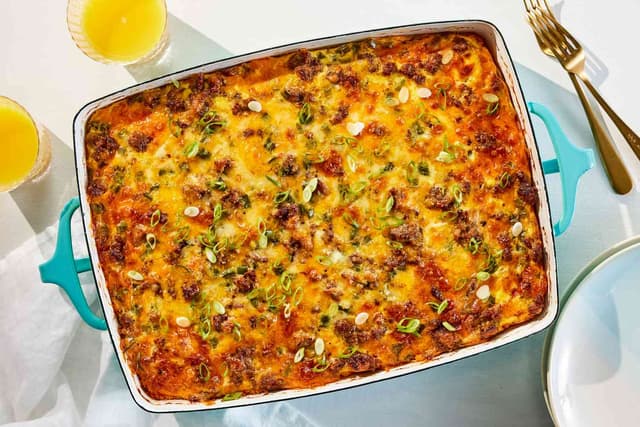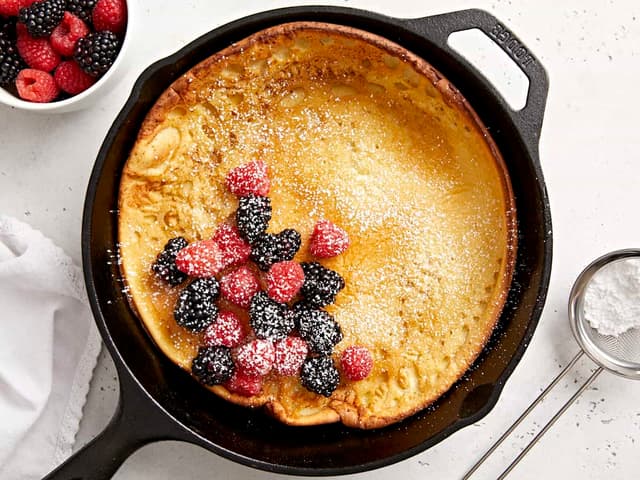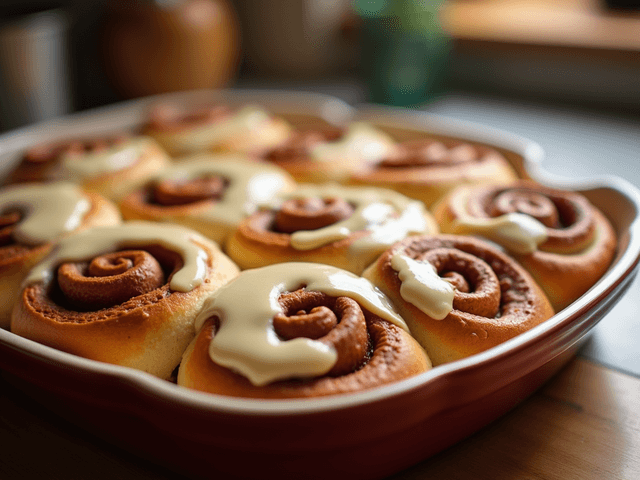The Guide to Classic Baked Oatmeal: Your Go-To Recipe for Cozy Mornings
There are few breakfasts as deeply comforting as a warm pan of baked oatmeal emerging from the oven. It’s a dish that feels like a hug in a bowl, filling your home with the nostalgic scent of cinnamon and brown sugar. More than just a meal, it’s a crowd-pleasing experience that perfectly straddles the line between a wholesome start to the day and a truly delightful treat.
This isn’t your typical stovetop porridge. Baked oatmeal boasts a unique and utterly addictive texture—a wonderful cross between a soft, warm oatmeal cookie and a creamy, sliceable breakfast pudding. This magical quality has been known to convert even the most adamant oatmeal skeptics into lifelong fans, making it a must-have recipe in your collection.
Why Make This Delicious Recipe & When to Serve It
The appeal of baked oatmeal is simple: it delivers maximum comfort with minimal effort. The oven does all the work, freeing you from standing over a hot stove and stirring. It’s a straightforward "mix and bake" process that even novice cooks can master with confidence.
Better yet, this recipe is a meal-prepper's dream. A single pan baked on Sunday provides a quick, delicious, and satisfying breakfast for the entire week. Just reheat a square on busy mornings, and you’re good to go.
While perfect for any day, baked oatmeal truly shines on special occasions. Imagine serving a warm, fragrant casserole for a holiday brunch, a lazy weekend family breakfast, or a gathering with friends. It’s an effortlessly impressive dish that can be prepared the night before, making you the most relaxed host on the block.

Basic Ingredients (Serves 6-8)
- 3 cups Old-Fashioned Rolled Oats: These are the structural heart of the dish. Using old-fashioned oats ensures a delightful chew and a distinct, sliceable texture, preventing the mushiness that can result from finer oat types.
- 1 cup Packed Brown Sugar: This is the primary sweetener, adding a deep, molasses-like warmth and essential moisture that complements the oats perfectly. You can adjust this amount to taste for a less sweet breakfast.
- 2 Large Eggs: These are the essential binders that hold the oatmeal together, providing a rich, custardy, and sliceable texture that is the hallmark of a great baked oatmeal, while also adding a welcome boost of protein.
- 1 cup Milk: This provides the necessary moisture to soften the oats and creates a creamy, tender consistency throughout the bake. Whole milk adds richness, but any dairy or non-dairy milk will work beautifully.
- ½ cup (1 stick) Unsalted Butter, melted: This is the key to a rich, decadent flavor and a silky, non-sticky mouthfeel. Butter acts as a powerful flavor enhancer, elevating the entire dish from simple to sublime.
- 2 teaspoons Baking Powder: This is the secret leavening agent that prevents the oatmeal from becoming dense and heavy. It creates tiny bubbles during baking, giving the final dish a surprisingly light and fluffy lift.
- 2 teaspoons Ground Cinnamon: This is the quintessential warm spice that provides aromatic depth and flavor. It pairs beautifully with the oats and brown sugar, making the whole house smell incredible as it bakes.
- 2 teaspoons Vanilla Extract: This is a crucial flavor enhancer that adds a warm, aromatic background note. It gives the illusion of extra sweetness, allowing you to create a flavorful dish even with less sugar.
- 1 teaspoon Salt: This is the unsung hero of all baking. Salt doesn't make the oatmeal salty; it sharpens and balances all the other flavors, making the sweet notes taste sweeter and the rich notes more profound.

Step-by-Step Preparation
Follow these meticulous steps for guaranteed success. The process is simple, but each detail ensures the perfect outcome.
- Prepare Your Oven and Pan: Preheat your oven to 350°F (175°C) to ensure an even and consistent bake from the moment the dish goes in. Thoroughly grease a 9x13-inch baking dish with butter or non-stick spray to guarantee easy serving and cleanup later.
- Combine the Dry Ingredients: In a large mixing bowl, combine the 3 cups of old-fashioned rolled oats, 1 cup of brown sugar, 2 teaspoons of ground cinnamon, 2 teaspoons of baking powder, and 1 teaspoon of salt. Whisk them together thoroughly to ensure the leavening and spices are evenly distributed for a perfect texture and flavor in every bite.
- Whisk the Wet Ingredients: In a separate medium bowl, lightly beat the 2 large eggs. Then, whisk in the 1 cup of milk, ½ cup of melted butter, and 2 teaspoons of vanilla extract until the mixture is smooth and fully combined. Keeping wet and dry ingredients separate initially prevents premature activation of the baking powder.
- Unite and Mix: Pour the wet ingredient mixture into the large bowl containing the dry ingredients. Stir gently with a spatula or wooden spoon only until everything is just combined. Be careful not to overmix, as this can lead to a tougher, less tender texture.
- Spread and Bake: Pour the final oatmeal mixture into your prepared 9x13-inch baking dish and use the spatula to spread it into an even layer. Bake in the preheated oven for 35 to 40 minutes, or until the top is a beautiful golden brown and the center is set (a toothpick inserted should come out mostly clean).
- Rest Before Serving: This is a crucial step for the perfect texture! Let the baked oatmeal cool on a wire rack for at least 10 minutes before slicing. This allows the custard-like structure to firm up, ensuring you can serve neat, clean squares instead of a crumbly mess.

Tips for the Perfect Recipe
A few expert tips can elevate your baked oatmeal from great to absolutely flawless.
- Choose Your Oats Wisely: For a classic chewy, sliceable oatmeal, stick with old-fashioned rolled oats. If you prefer a softer, more cake-like consistency, you can use quick-cooking oats, but avoid instant oats, which will turn to mush.
- Manage Moisture with Fruit: If adding juicy fresh or frozen fruit like berries, be aware that they release significant water during baking. To prevent a soggy bottom, consider reducing the milk by about ¼ cup or thawing and draining frozen fruit before adding it.
- Don't Skip the Salt: It may seem like a minor detail, but that 1 teaspoon of salt is a flavor powerhouse. It balances the sweetness of the sugar and enhances the warm notes of the cinnamon and vanilla, creating a more complex and delicious final product.
- Make-Ahead Tip: If you plan to assemble the oatmeal the night before and refrigerate, consider substituting the melted butter with an equal amount of a neutral oil. Melted butter can solidify and clump in the cold fridge, whereas oil will remain liquid, ensuring a more uniform mixture when you bake.

Serving Ideas
Baked oatmeal is wonderfully versatile. Serve it simply or create an elaborate toppings bar for a fun brunch experience.
- The Classic & Simple: Serve a warm square in a bowl with a generous splash of cold or warm milk or cream. This is the traditional Amish way and adds a lovely, comforting creaminess.
- The Fruit & Yogurt Parfait: Top with a dollop of plain or vanilla Greek yogurt for a tangy contrast and extra protein, then pile on fresh fruit like berries, sliced bananas, or peaches.
- The Crunchy & Nutty: Add textural contrast with a sprinkle of toasted chopped pecans, walnuts, or sliced almonds. For a nut-free crunch, try pumpkin or sunflower seeds.
- The Decadent Drizzle: For a real treat, drizzle with pure maple syrup, honey, homemade Nutella, or a swirl of peanut or almond butter.
- Build a Brunch Plate: Serve smaller squares of baked oatmeal alongside savory accompaniments like scrambled eggs, crispy bacon or sausage, and a fresh fruit salad for a complete and satisfying brunch spread.

Tips for Storing and Reheating
Baked oatmeal is perfect for making ahead. Follow these tips to keep it tasting fresh all week long.
- Storing Leftovers
- In the Refrigerator: Once cooled completely, cover the baking dish tightly with foil or plastic wrap, or transfer individual slices to an airtight container. It will keep beautifully in the fridge for up to 5-7 days.
- In the Freezer: For longer storage, let the oatmeal cool completely, cut it into individual portions, and wrap each portion tightly in plastic wrap or foil. Place the wrapped portions in a freezer-safe bag for up to 3 months.
- Reheating Tips
- From the Refrigerator: Reheat individual slices in the microwave for 60-90 seconds. For the best texture, add a splash of milk before heating to restore its creamy moisture. You can also reheat in a 350°F oven for 10-15 minutes.
- From the Freezer: Reheat directly from frozen in the microwave for 2-3 minutes, adding a splash of milk to help it rehydrate. Alternatively, place the frozen portion in a 350°F oven for 15-20 minutes until warmed through.
Conclusion
With its cake-like texture, comforting warmth, and endlessly customizable nature, baked oatmeal is more than just a recipe—it's a breakfast ritual waiting to happen. It’s the perfect solution for busy weekday mornings, lazy weekend brunches, and everything in between. We encourage you to give this recipe a try and discover your new favorite way to enjoy oatmeal.
Frequently Asked Questions
Q: Can I prepare baked oatmeal the night before?
A: Absolutely! You can fully assemble the recipe in the baking dish, cover, and refrigerate overnight. For a slightly better texture, you can also mix the dry and wet ingredients in separate bowls, storing them and combining just before baking.
Q: What is the texture of baked oatmeal supposed to be like?
A: Think of it as a wonderful hybrid! It’s not soupy like stovetop porridge but should be firm enough to slice into squares. A perfect baked oatmeal has a soft, chewy, and slightly custardy interior with a beautifully golden, slightly crisp top.
Q: Can I use steel-cut or quick-cooking oats in this recipe?
A: This recipe is optimized for old-fashioned rolled oats. You can substitute an equal amount of quick-cooking oats for a softer, more cake-like texture. However, steel-cut oats require a different recipe with more liquid and a much longer baking time.
Q: How can I make this baked oatmeal recipe vegan or dairy-free?
A: For a dairy-free version, use your favorite plant-based milk and substitute the butter with melted coconut oil or vegan butter. To make it vegan, also replace the two eggs with two "flax eggs" (2 tablespoons of ground flaxseed mixed with 6 tablespoons of water).











